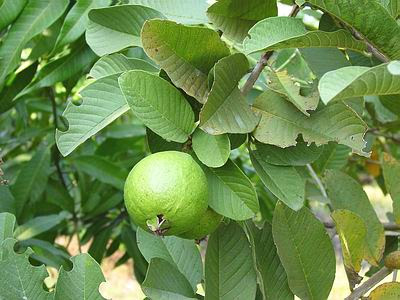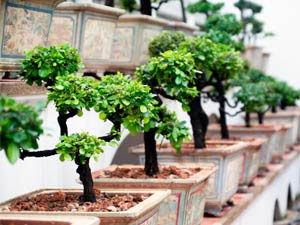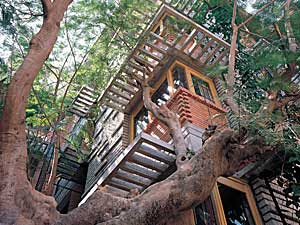You can actually grow bananas over growing banana trees because they are deceptively easy to maintain. You may have seen scores of these plants growing on the roadsides or highways if you live in a moist warm climate. Does it give you the impression that these are wild plants? Not at all, there are commercial banana plantations.
Things To Know About Banana Trees:
1. First of all they are not tress because their stem has no wood; it is all rolled up leaves. They are sometimes referred to as banana palms but it is misnomer because they do not belong to the palm family. They are botanically classified as herbs.
2. They are perennial plants but they die out after producing fruits. However at the base of the dried up or 'burnt' plant there are lots of tiny shoots growing. These shoots called corms are best for growing fruit trees of this type.
3. Every single part of the this tree is useful. The leaves can be used to serve food (Indian culture), the flower and the fruit both are edible and the dried up remains can be used to make woven handicrafts.
Right Way To Grow Banana Trees:
1. As it has been already said, the vegetative propagation is the best way to start. You cannot use seeds to grow these fruit trees because they produce no seeds to propagate.
2. The best way to growing these tropical plants in patches increases their chances of survival. So you should aim at a banana garden and not just a single tree. They like to get shade and company from each other.
3. Lost of water and warn temperate weather is what you need for growing these fruit trees. They love moist weather and warm air.
4. Shade is a necessary element of having a banana patch. Although they are tropical plants they cannot tolerate direct sunlight. Often you will see a banana tree getting sun burnt due to direct sunlight and also lack of water. It is a good idea to grow these trees under the shade of other bigger plants or at a spot that gets slant sunlight.
5. You need good soil, basically soil rich in organic matter that is dark in colour and fertile. Sandy or rocky soil does not go down well with these plants. They may grow but they will not be green.
Expert Tips For Banana Tree Growers:
1. Strong winds can damage your plants because at the end of the day it is tender stock that holds it together. Ideally these should be the first bunch of trees facing the wind side.
2. It is always better not to grow them indoors or as potted plants because an average banana plant needs space. Their leaves start growing from under the ground and finally break up in a fountain at the crown.
Use these gardening tips to grow your own food and decorate with it too.
Things To Know About Banana Trees:
1. First of all they are not tress because their stem has no wood; it is all rolled up leaves. They are sometimes referred to as banana palms but it is misnomer because they do not belong to the palm family. They are botanically classified as herbs.
2. They are perennial plants but they die out after producing fruits. However at the base of the dried up or 'burnt' plant there are lots of tiny shoots growing. These shoots called corms are best for growing fruit trees of this type.
3. Every single part of the this tree is useful. The leaves can be used to serve food (Indian culture), the flower and the fruit both are edible and the dried up remains can be used to make woven handicrafts.
Right Way To Grow Banana Trees:
1. As it has been already said, the vegetative propagation is the best way to start. You cannot use seeds to grow these fruit trees because they produce no seeds to propagate.
2. The best way to growing these tropical plants in patches increases their chances of survival. So you should aim at a banana garden and not just a single tree. They like to get shade and company from each other.
3. Lost of water and warn temperate weather is what you need for growing these fruit trees. They love moist weather and warm air.
4. Shade is a necessary element of having a banana patch. Although they are tropical plants they cannot tolerate direct sunlight. Often you will see a banana tree getting sun burnt due to direct sunlight and also lack of water. It is a good idea to grow these trees under the shade of other bigger plants or at a spot that gets slant sunlight.
5. You need good soil, basically soil rich in organic matter that is dark in colour and fertile. Sandy or rocky soil does not go down well with these plants. They may grow but they will not be green.
Expert Tips For Banana Tree Growers:
1. Strong winds can damage your plants because at the end of the day it is tender stock that holds it together. Ideally these should be the first bunch of trees facing the wind side.
2. It is always better not to grow them indoors or as potted plants because an average banana plant needs space. Their leaves start growing from under the ground and finally break up in a fountain at the crown.
Use these gardening tips to grow your own food and decorate with it too.










Nice info. I grow them myself in out of all unlikely places, Chicago IL.
ReplyDelete